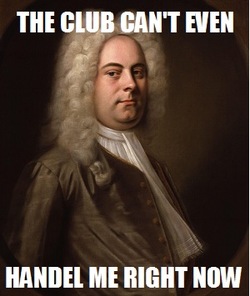 There’s a perception that classical musicians are different to pop musicians. On some level, this is true when it comes to learning experiences, and as teachers, we need to choose the right pedagogy for the style being studied. However, there are some similarities across all styles of music and we can use these similarities to bring relevance to new music when expanding student musical horizons. So what types of experiences can we give students?
In the classroom, we can start with these common music-making skills that exist across genres and use these to create relevance for the student from known music to the unknown. This way, we can create a balance between what is seen as 'classical' and what is seen as 'pop'. From here, we can then hone in on specific pedagogies to learn specific styles. Music pedagogy, for ourselves as musicians, and for our students, need to authentically align with the musical style we are studying. We need to model ourselves as 21st-century musicians and interact with music in a musical way, not merely a historical and theoretical way, in order to remain relevant. More reading
3 Comments
 Technology has always influenced the musical world and redefined parameters for composition, both in the electronic and acoustic music. A simple example within my own world can be seen with keyboard instruments where the smallest harpsichord had 48 keys while the modern piano has 88 keys, widening the range of notes that can be used in a keyboard composition. There is a parallel with this in new technology and much music-making is now easily created using computers and software. As teachers, we can create new opportunities for musical learning through technology and in teacher-speak, the TPACK framework helps us to understand how to incorporate this into the classroom environment. In his book Music Technology and Education: Amplifying Musicality (2015), Andrew Brown discusses three metaphors of technology in music education that fall into the TPACK model:- 'technology as a musical tool'; 'technology as a musical medium'; and 'technology as a musical instrument'. ‘Technology as a musical tool’ is easily implemented and already widely used in music classrooms across the world. In my own teaching, I've used programs such as Auralia which mimic and extend traditional aural exercises help to increase a student's musical understanding and musical intelligence. ‘Technology as a musical medium’ refers to the type of technology which enables an activity and sometimes has more capability, depending on the student, to capture and convey musical ideas. An example of this is composition which, in Western music, is traditionally notated on paper, but now can be easily (and some say, easier) notated using software such as Sibelius. I prefer pencil and paper but regularly use Sibelius and find that students can get a result quickly with this software. Both of these metaphors have enhanced music education. In the video below, Stephen Heppell discusses the creative ways that technology has been incorporated into the classroom. Although these are not music-specific, it does give the feeling that anything is possible. David Price below discusses the way technology empowers learning, including music-specific examples such as collaborating online, creating works for high visibility and removing the 'middle-man', which has had a large impact on the music industry. Anyway, back to Amplifying Musicality...
Of Brown's three metaphors, ‘technology as a musical instrument’ is the most controversial for me, requiring a change in definition as to what makes a musician. Traditional music requires skilled, practised musicians to play on musical instruments of quality, conveying sound that sits within a pre-determined scale system. There is an argument that the same can be achieved using digital technology, even though 'immediate gratification with little effort is possible' (Brown, 2015). Technology can create new opportunities but these opportunities are not necessarily the most artistic or true to the Western music tradition. For me, the issue in re-defining technology as a musical instrument, capable of artistic expression, is that it can remove the idea of the live musician who uses body movement to produce an expressive, accurately-rendered, personally-interpreted performance taken from a rich range of repertoire. Most digital music is created pre-performance not in a live situation and therefore is composed not performed. Easy way outs such as replacing orchestral accompaniment with digital orchestras for theatrical shows lack musical collaboration (and joy) and favours efficiency. In the context of a curriculum, if definitions of music-making are to be broadened to include digital music-making, it must include the experience of a musician as a live performer within the digital music context. In this way, ‘technology as a musical tool’ types of software like Auralia and ‘technology as a musical medium’ types of software like Sibelius also remain relevant, because it develops the necessary musicianship skills needed for live musical performances. In my ideal world, teaching music students to value live performance should then hopefully translate into adults who value the richness of live performance. |
My BlogReflections/news on music, piano and music teaching, and anything else that pops up. Archives
October 2021
Categories
All
|
 RSS Feed
RSS Feed